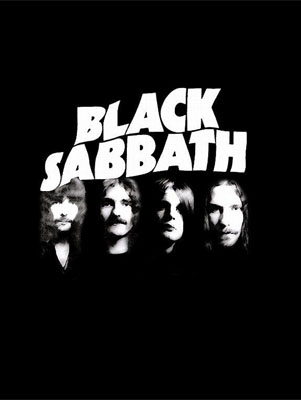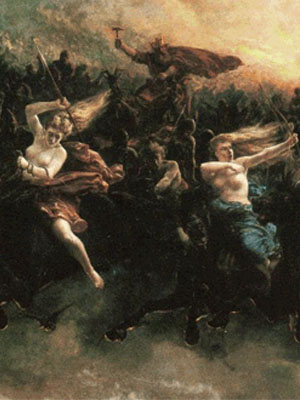 Metal stumps many people because there is a values system within it which has been consistent across the years, but from reading metal lyrics it is hard to figure out what that values system is.
Metal stumps many people because there is a values system within it which has been consistent across the years, but from reading metal lyrics it is hard to figure out what that values system is.
From the imagery and topics of songs, we know metal has a spread not unlike that of European Romantic poetry: nature, horror, the occult, ancient ruins, melancholy alienation and war-like power worship are frequently mentioned. It is difficult to translate those ideals into our contemporary individual-based values system.
Arguably the primordial ‘Lucy’ of metal bands, Black Sabbath augmented the aesthetics of heavy blues rock bands like Cream and Led Zeppelin with occult imagery, pagan and mystical overtones.
However, at the same time as they were seemingly ‘up in the clouds’, there was a nuanced and satirical realism present in the band’s aesthetics that prayed on rosy-eyed optimism.
For instance, in the lyrics of ‘Solitude’ we get a stark, if not sentimental, picture of the fragile nature of human life:
My name it means nothing
My fortune is less
My future is shrouded in dark wilderness
Sunshine is far away, clouds linger on
Everything I possessed – Now they are gone
‘Hand of Doom’ is a satirical jab at the escapism of the contemporary hippie drug scene:
First it was the bomb, Vietnam napalm
Disillusioning, you push the needle in
From life you escape, reality’s that way
Colors in your mind, satisfy in timeYour mind is full of pleasure, your body’s looking ill
To you it’s shallow leisure, so drop the acid pill
Don’t stop to think now
To many, this would seem hypocritical given Sabbath’s legendary history of drug use. However, as any user will tell you, there’s a difference between use to escape and use simply because you like getting high.
This seeming paradox extends to other areas. For Sabbath, the means-ends relationship between an action and its intention is important. It may not be bad to use drugs, but to use drugs to escape reality in such a way that you then end up with an ideology of denying reality, could well be bad.
They apply this lens to other areas, such as politics and religion.
More interestingly still, Sabbath were regarded by many as a ‘Satanic’ band owing to the cover art of their first, self-titled album. However, in the song ‘After Forever’ a charge of ‘group-think’ mentality is directed at, ironically, atheists:
Is your mind so small that you have to fall
In with the pack wherever they run
Will you still sneer when death is near
And say they may as well worship the sun?I think it was true it was people like you that crucified Christ
I think it is sad the opinion you had was the only one voiced
Will you be so sure when your day is near, say you don’t believe?
You had the chance but you turned it down, now you can’t retrieve
The above content makes sense when we consider that one of the things that sets the best metal apart from its heavy rock is its nihilism. Nihilism is a form of extreme realism that rejects the intentions of human individuals when used for the sake of those human individuals, and respects only viewpoints that are oriented toward the larger reality outside the individual.
Metal has always been about blowing overly-optimistic and unrealistic view points out of the water, and worshiping what is ‘heavy’ about existence. Black Sabbath started this trend by calling out many of the convenient lifestyle viewpoints of its contemporaries.
2 Comments During the second world war, while most of humanity was involved in mass warfare, the writer and thinker Jean Paul Sartre was instead laboring away in the libraries of occupied France. He was solidifying what has become known as the philosophy of ‘existentialism’. One of the main tenants of existentialism is that ‘existence precedes essence’, or in other words, that there is no fixed and immutable basis from which human life proceeds and from which it derives its meaning.
During the second world war, while most of humanity was involved in mass warfare, the writer and thinker Jean Paul Sartre was instead laboring away in the libraries of occupied France. He was solidifying what has become known as the philosophy of ‘existentialism’. One of the main tenants of existentialism is that ‘existence precedes essence’, or in other words, that there is no fixed and immutable basis from which human life proceeds and from which it derives its meaning.
